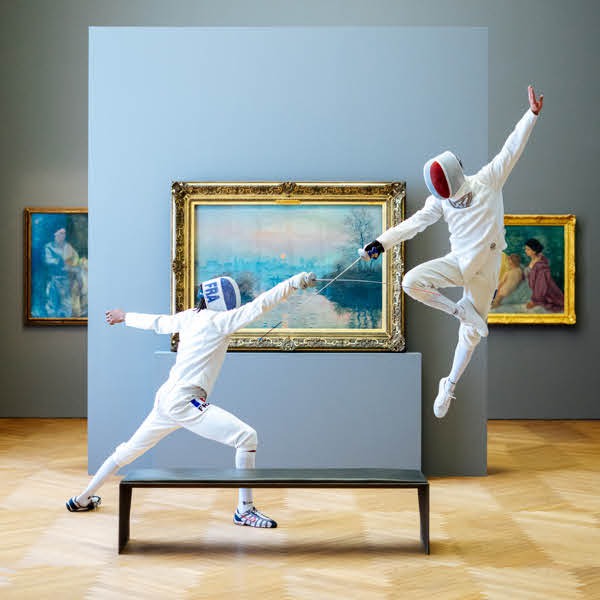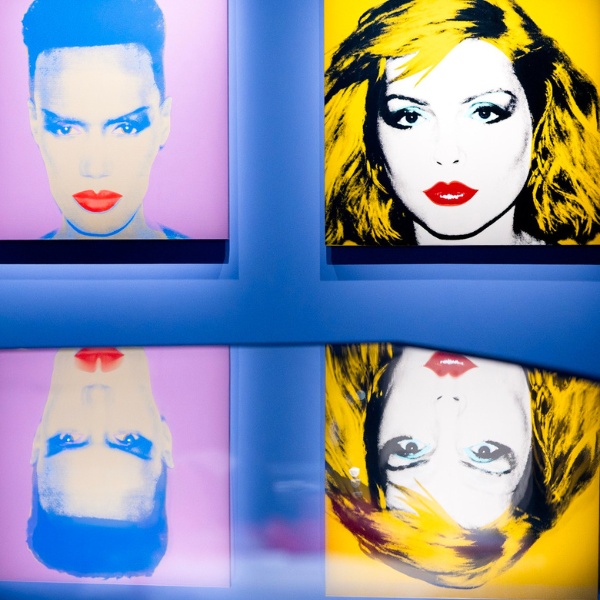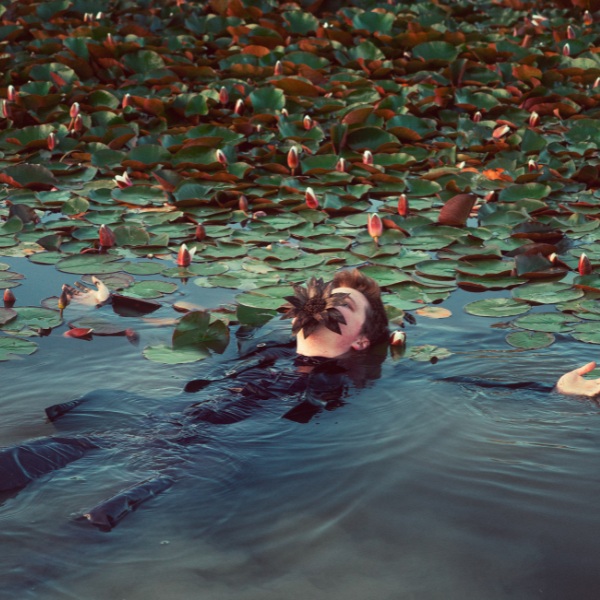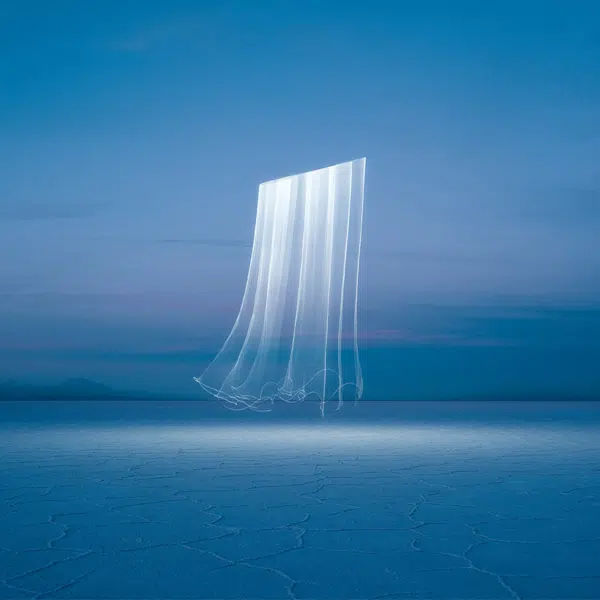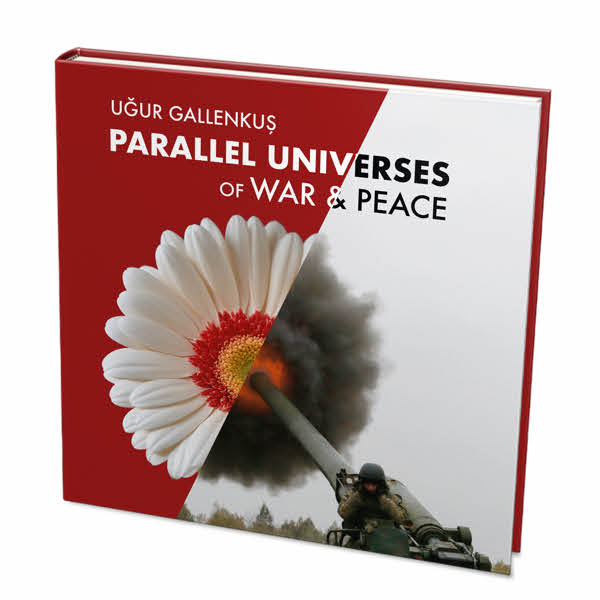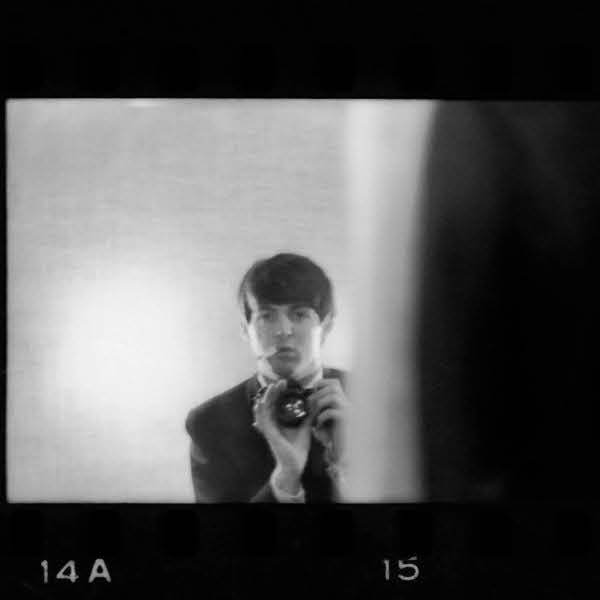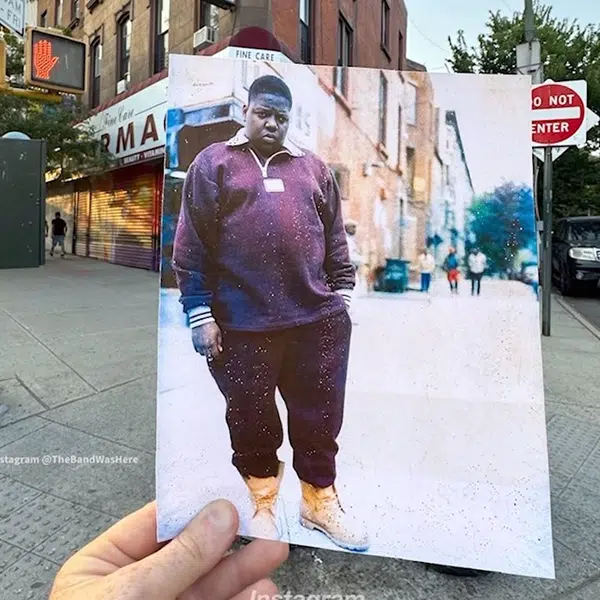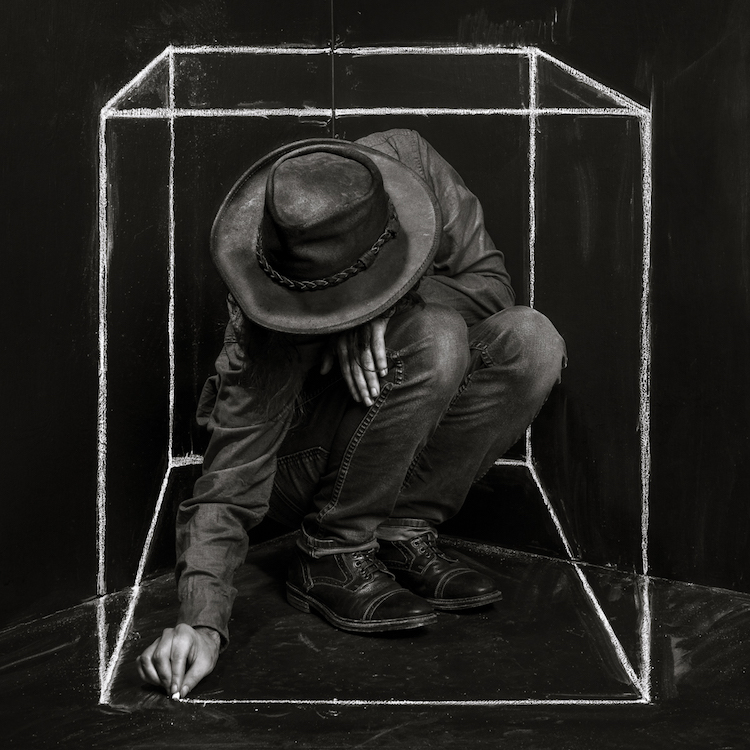
“Penalty Box”
Photographer John Dykstra has had a long artistic journey. After falling in love with photography as a teenager, he went through a period where he sold his equipment, only to be lured back to his passion in 2014. After mastering studio lighting in a college program, he fell in love with portraiture and photography's ability to represent any fantasy the artistic mind could imagine. This led him to begin executing a series of incredibly surreal photography that plays with realism and perspective.
Taking influence from paintings, sculptures, music, childhood memories, and self-reflection, Dykstra uses items like chalk and household props to craft his stunning images. In particular, his work plays with perspective, blending the two-dimensional and three-dimensional into one photo for mind-bending results.
“I am especially inspired by the believability of the photographic medium,” the photographer tells My Modern Met. “By believability, I mean the accuracy of its likeness to reality. It’s easy to see a photograph of something and make a snap judgment: either this photograph is honest and shows what something looks like, or it's been manipulated in some way. With my surreal imagery, it’s a little bit of both.”
Dykstra is careful to note that he aims to document exactly what's in his viewfinder, striving for perfection in the studio rather than on the computer. “I don’t use any Photoshop compositing or heavy manipulation. I never add anything in post-production and I rarely remove anything, even stray hairs.” In an age where there's much commentary on what's Photoshopped or not, his work is a refreshing reminder of what creatives can accomplish without the assistance of electronic manipulation.
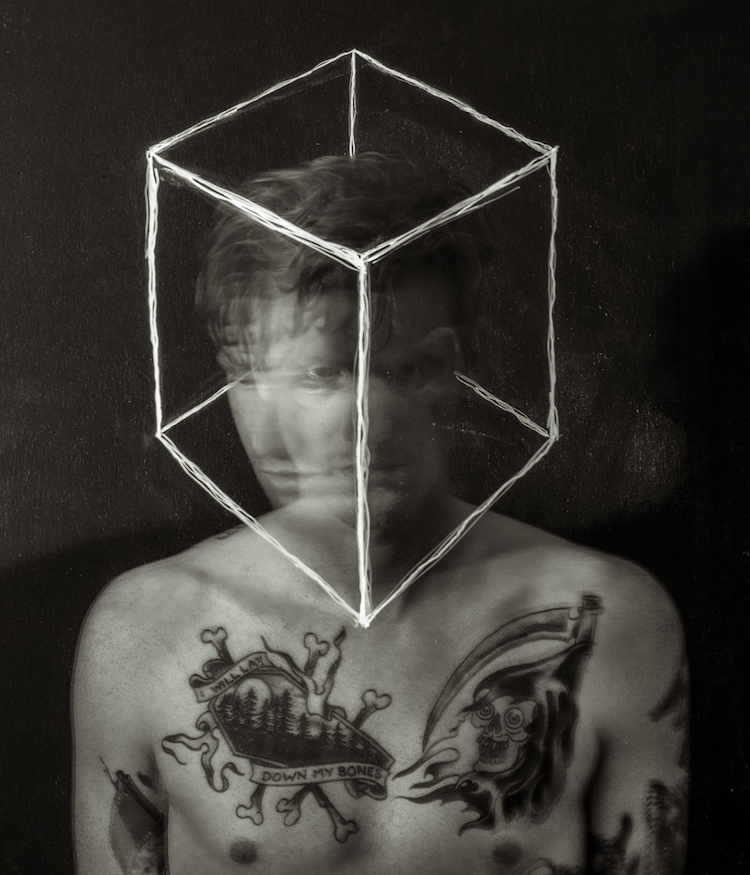
Dykstra's themes come from much internal reflection, where a mood or life experience provides the guiding light for a particular image. From there, Dykstra goes about creating his vision in the studio. First, he gathers props by scouring Craig's List or visiting estate sales. Then, if the image requires, he'll work out his drawings in the studio, making careful markings to see just how his design will line up in the photograph. By the time the model arrives, he typically needs only one hour to photograph his vision, after which the photo goes into Lightroom for some light color correction.
What does the burgeoning fine art photographer hope people take away from his work? “The importance of perspective. I work with perspective illusions as a symbol for the personal perspective on life. We all have a perspective on the world, and depending on how healthy that perspective is, we can suffer unnecessarily or we can prosper against great odds. Penalty Box was my first perspective illusion, and for me it represented the idea that many of our own boundaries are not only self-inhibited but are no more than an illusion, suggesting that a change in perspective could be the key component in setting the self free.”
Rather than rely on Photoshop, John Dykstra uses chalk, paint, and simple tricks of perspective in his surreal photography.
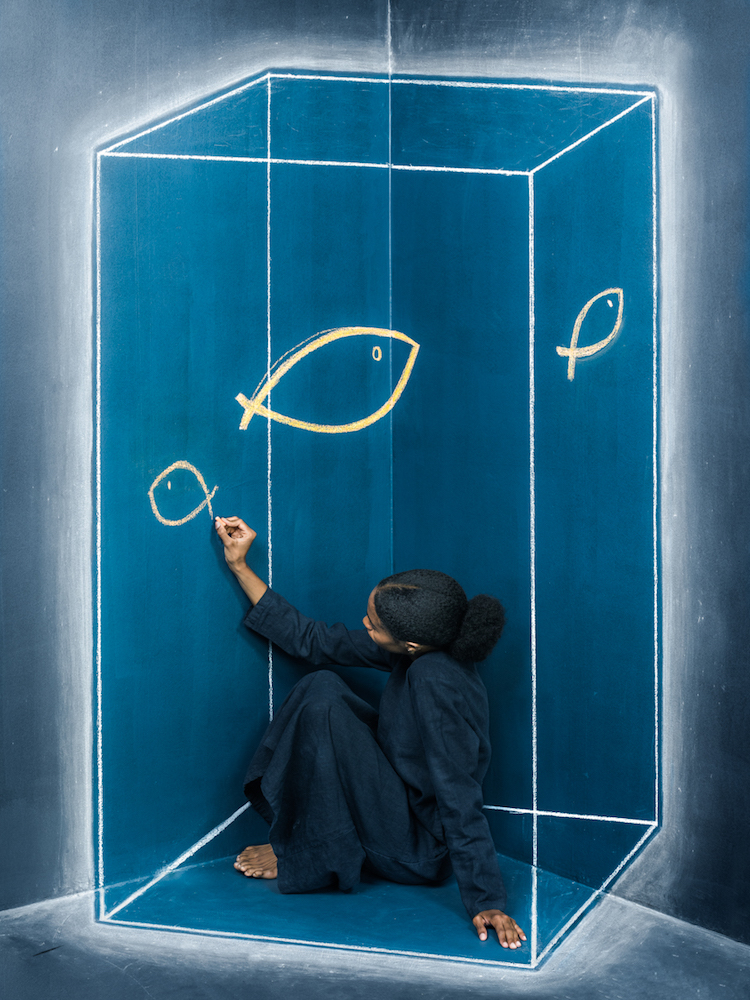
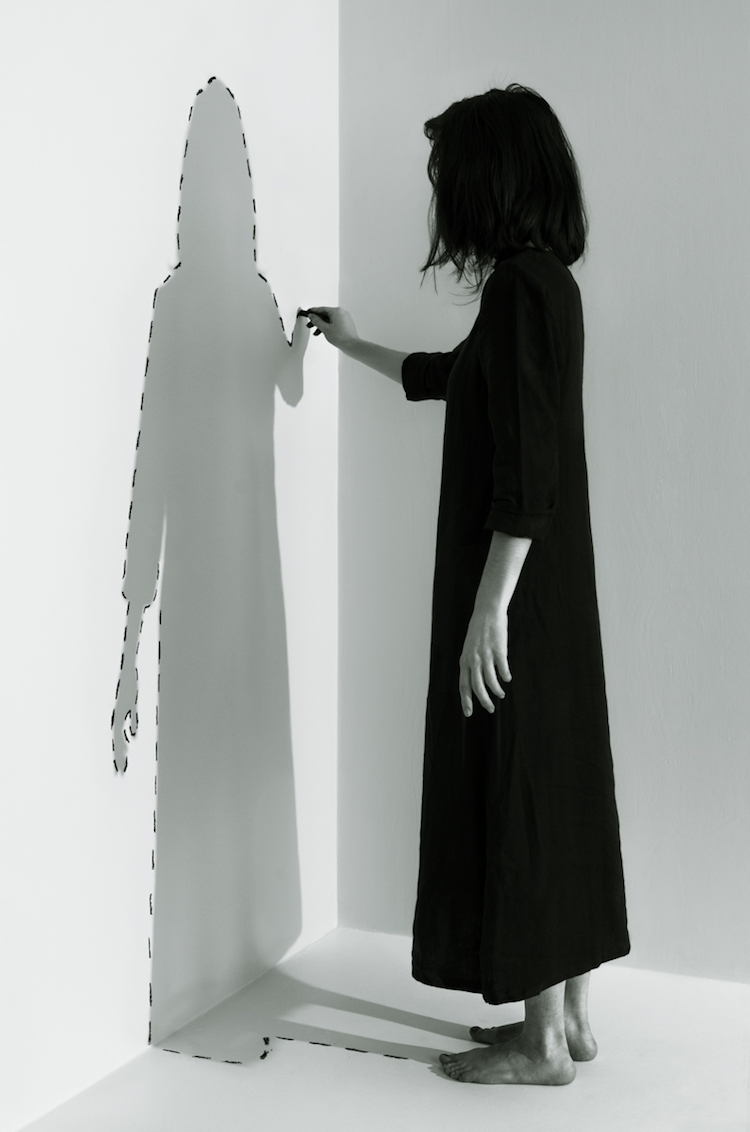


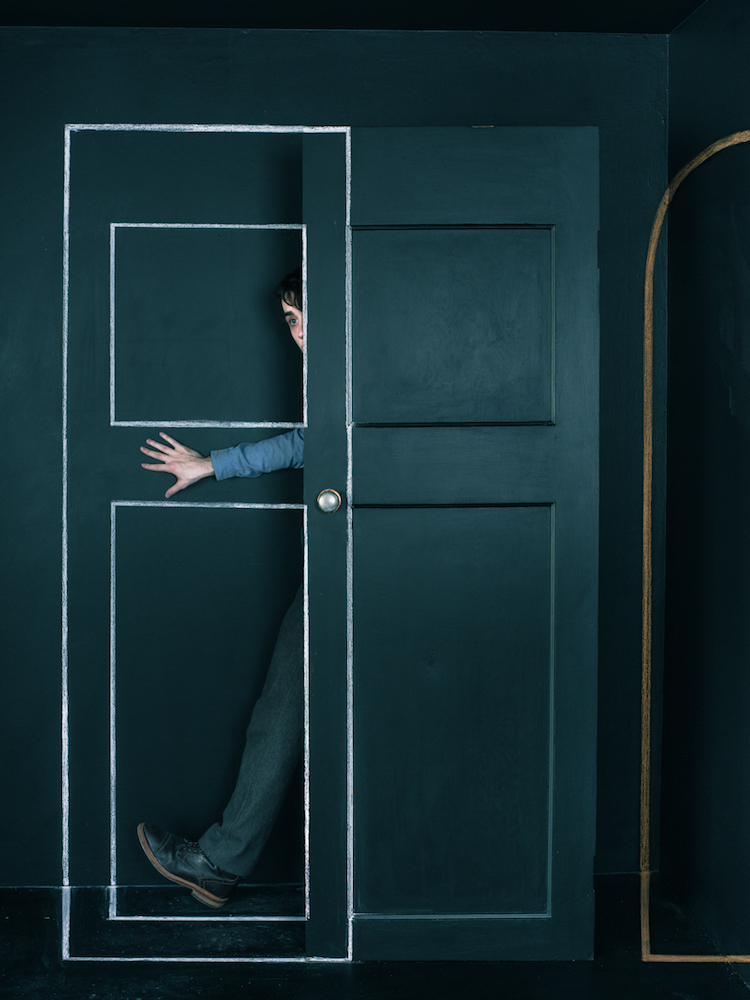
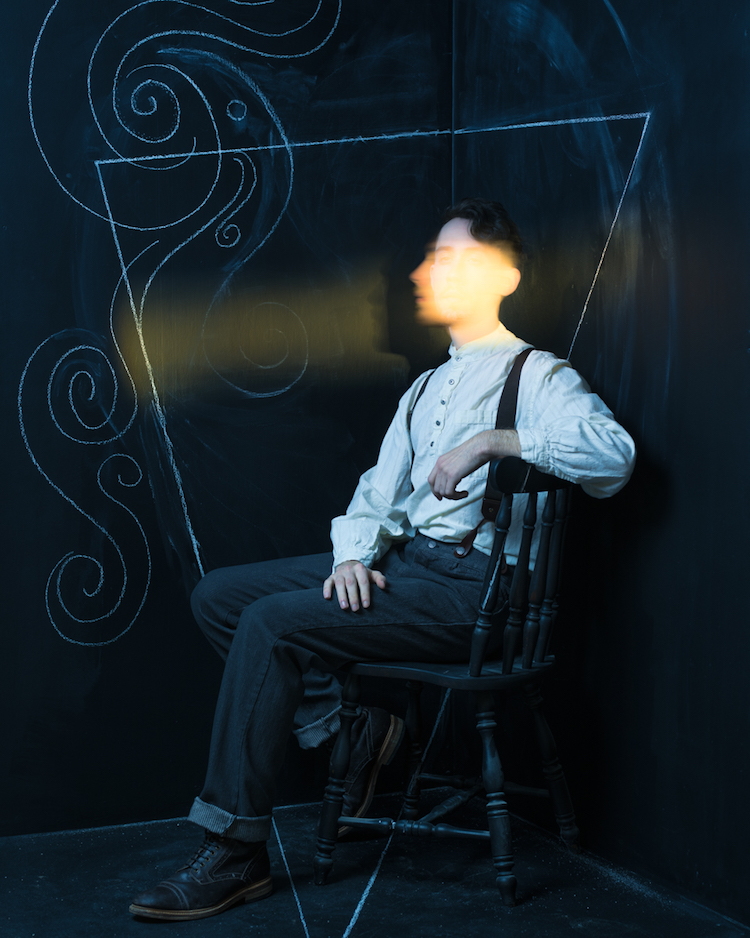

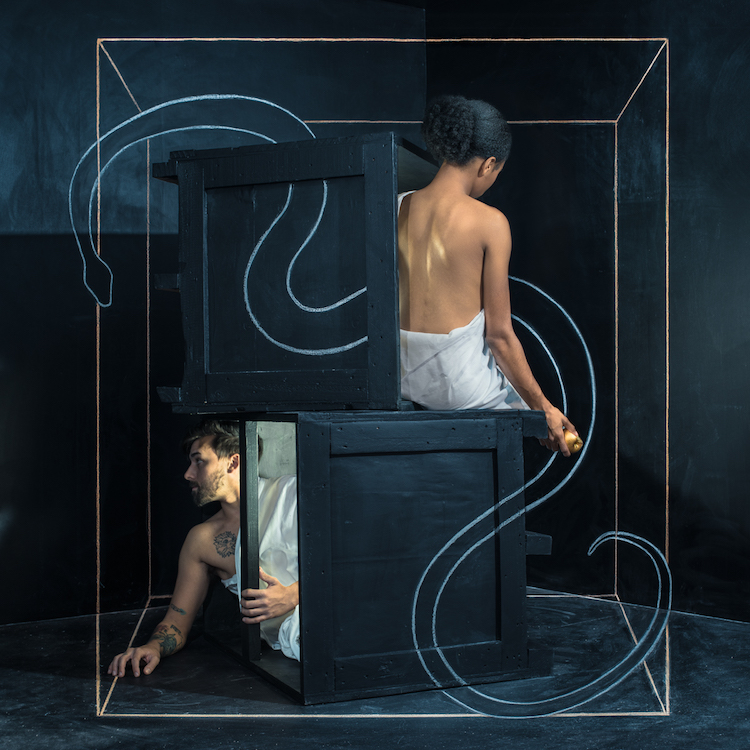
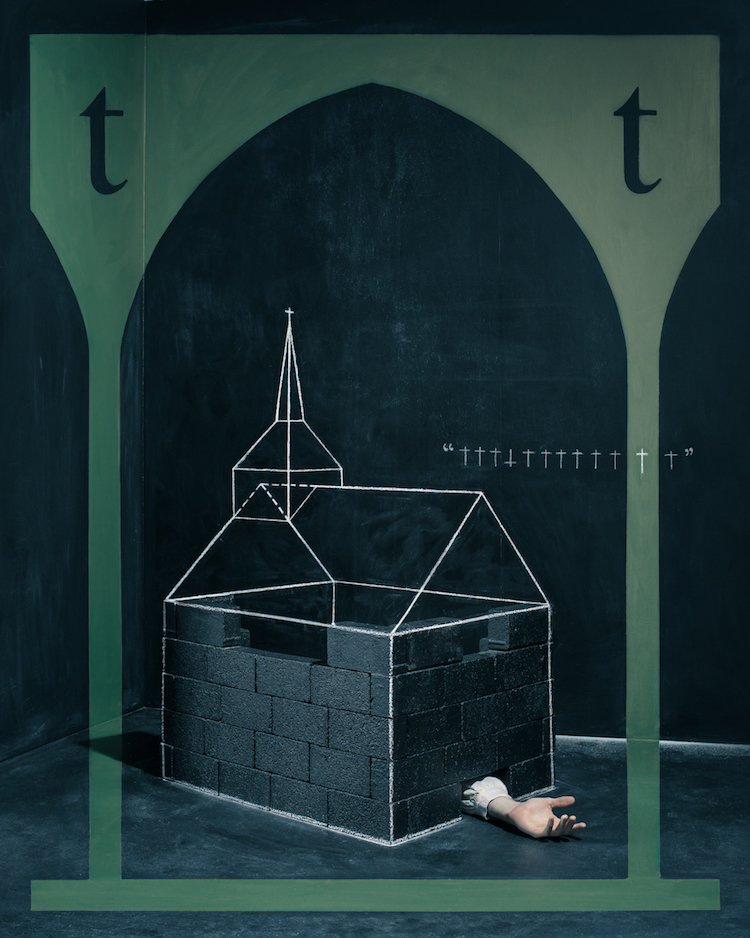
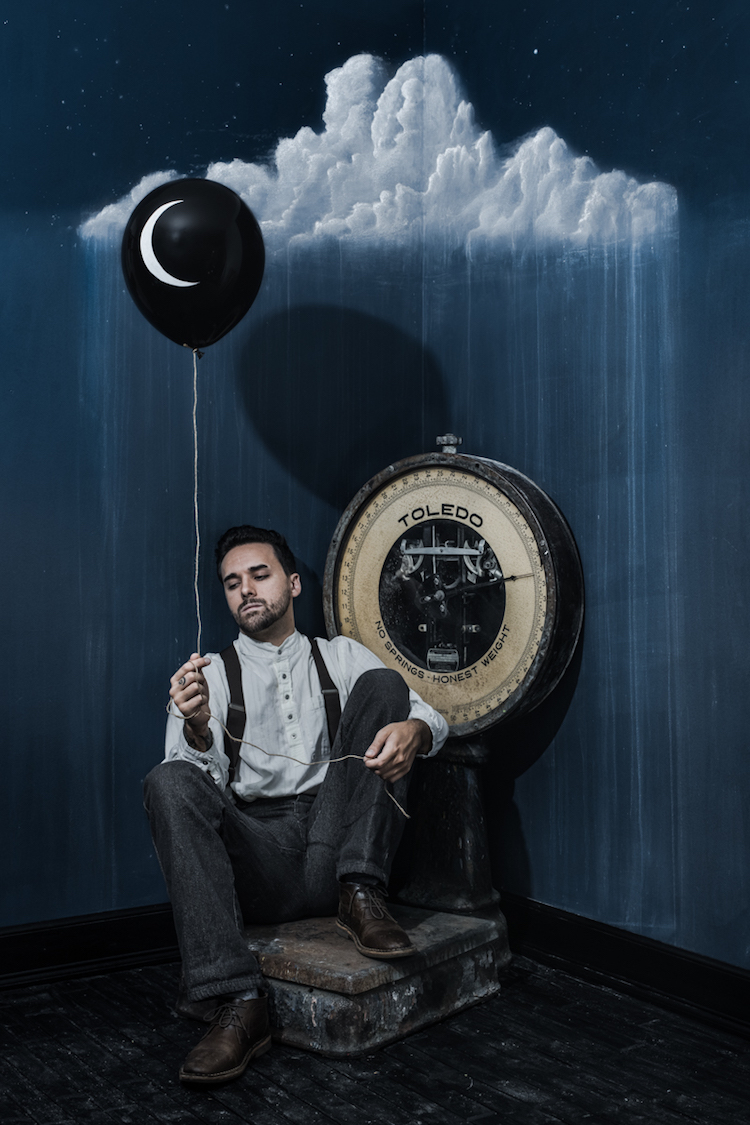
These side-by-side images demonstrate how Dykstra works in the studio to create his surreal photographs.
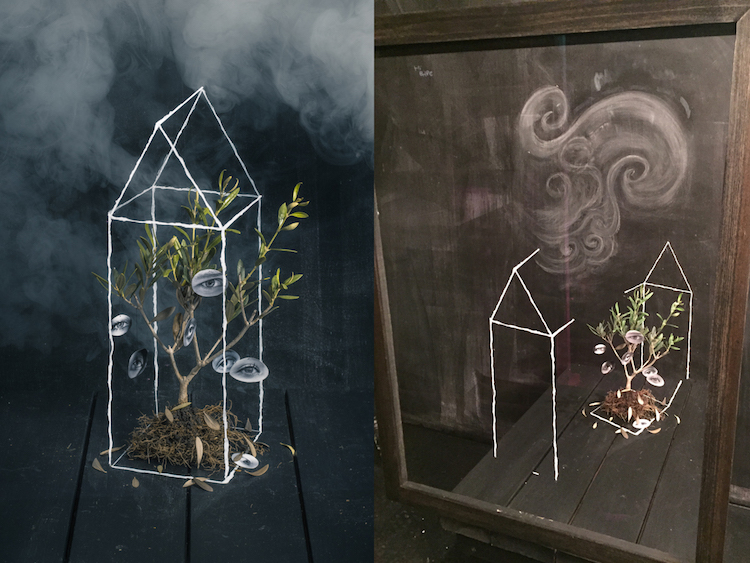
John Dykstra: Website | Facebook | Instagram
My Modern Met granted permission to use photos by John Dykstra.
Related Articles:
Surreal Photos Look Like They’re Straight Out of a Dream
Photographer Reveals How She Captured Surreal “Butterflies in My Stomach” Self-Portrait
Surreal Portraits of the Human Form Hiding Behind Reflections of Nature
Artist Uses Age-Old Technique to Create Photomontages of Surreal Indoor Landscapes












































































